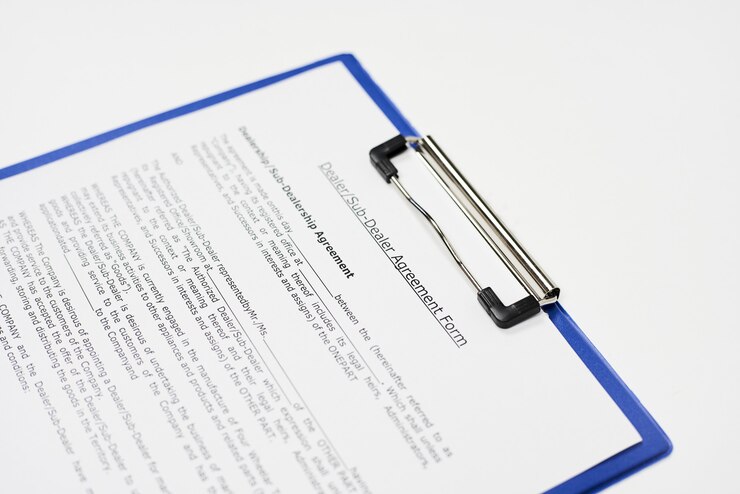Table of Contents
A hanging indent in Word is a special way of formatting your text, where every line in a paragraph is indented except the first one. This style is commonly used in reference lists or bibliographies, like those in APA, MLA, and Chicago citation styles. If you want your text to stand out and be easier to read, learning how to use a hanging indent Word is a great skill to have.
To create a hanging indent in Word, you don’t need to worry about manually adding spaces or tabs. Instead, Word has a simple feature that automatically formats your text for you. In this guide, we will show you how to set up a hanging indent in Word, so you can quickly improve the look of your documents without stress.
What Is a Hanging Indent in Word? Everything You Need to Know
A hanging indent in Word is a special way of formatting your text. When you use this format, every line in the paragraph is indented except for the first one. It’s commonly used in reference lists, like those in research papers or essays. This makes it easier to read and organize your sources.
In simple terms, a hanging indent makes the second and subsequent lines of your paragraph “hang” a little to the right, while the first line stays in the same position. This format helps you easily see where one reference ends and the next begins.
If you have ever written a research paper, you might have seen this style used in bibliographies or reference lists. It’s an important formatting tool that helps make your document look neat and professional.
Why Use a Hanging Indent in Word for Your Bibliographies and References?
A hanging indent in Word is not just for decoration – it helps organize information in a way that’s easy to read. When you’re writing research papers or essays, you often need to list sources. Using this format makes it clear where each source starts and ends.
Using hanging indents is especially helpful for large lists. It ensures the reader can quickly find the details they need. Without this style, your references may look jumbled together, making it hard for others to find information. This is why many academic writing styles, such as APA, MLA, and Chicago, require it.
Here’s why you should use it:
- It helps separate each reference clearly.
- It makes your document look professional.
- It saves time when formatting long lists.
Step-by-Step Guide: How to Create a Hanging Indent in Word in Minutes
Creating a hanging indent in Word is easy, and you can do it in just a few simple steps. Don’t worry – you won’t need to manually press the “Tab” key every time. Microsoft Word has a built-in feature that does this for you automatically.
Here’s how you can do it:
- First, highlight the text you want to apply the indent to.
- Right-click and select “Paragraph” from the menu.
- In the window that pops up, look for the “Indentation” section.
- From the “Special” drop-down menu, select “Hanging.”
- Choose how far you want to indent the lines and click “OK.”
Once you’ve done this, the indent will be applied, and all lines after the first will be indented, leaving the first line out. It’s as simple as that!
Best Practices for Using Hanging Indents in Word in Professional Documents

Using a hanging indent in Word is a great way to improve the structure of your document, but it’s important to follow some best practices to make sure your work is polished. Here are a few tips to ensure you get it right.
Professional Tip 1: Keep It Consistent
Make sure the hanging indent is used consistently throughout your document. It should be applied in all your reference lists or bibliographies to maintain uniformity.
Professional Tip 2: Adjust the Indentation Size
The default indent size in Word may be too wide for your document. You can adjust it to fit your needs, but make sure it’s not too big or too small. A small indent (0.5 inches) is usually just right.
Professional Tip 3: Use It Only Where Needed
Not every section of your document needs a hanging indent. Only apply it to reference lists, works cited, or similar sections where it’s required.
By following these tips, you can make sure that your document looks clean, professional, and easy to read.
How to Use Hanging Indents in Word for Different Citation Styles (APA, MLA, Chicago)
When you’re working on academic papers, using a hanging indent in Word can help you follow different citation styles like APA, MLA, and Chicago. Each style has its own rules for how citations should be formatted, and hanging indents are a common requirement.
For example, in APA style, every reference in the reference list should use a hanging indent. The second and all following lines of a reference are indented to make it easier to find the source you’re looking for. The same goes for MLA and Chicago styles, although the exact formatting for the reference itself can vary.
Here’s a quick guide on how to apply it in each style:
- APA: Apply hanging indent after each source in the reference list.
- MLA: Same as APA, the second and following lines should be indented.
- Chicago: Citations in the bibliography are formatted with hanging indents.
By applying the hanging indent correctly, you ensure that your work is formatted according to the requirements of each citation style.
Fixing Hanging Indent Problems in Word: Troubleshooting Tips
Sometimes, even after following all the steps, your hanging indent in Word might not look right. If this happens, don’t worry – there are simple fixes you can try. Let’s go through some common problems and how to solve them.
Problem 1: The Indent Won’t Apply Properly
This usually happens if you’ve applied the indent to the wrong part of your document. Make sure you’ve selected the correct paragraph or reference list before applying the indent.
Problem 2: The Indentation is Too Large or Small
If the indent is too big or too small, it might look out of place. You can adjust the size of the indent by changing the measurement in the “Indentation” section of the paragraph settings. Set it to 0.5 inches for the best result.
Problem 3: Indent Not Showing in Print Preview
Sometimes the indent looks fine on the screen but doesn’t appear when you print. This can happen if your settings are not saved. Be sure to click “OK” in the paragraph settings and double-check in print preview.
By knowing how to troubleshoot common problems, you can save time and fix issues quickly.
How to Make Your Document Look Professional Using Hanging Indents in Word

If you want your document to look more polished and organized, applying a hanging indent in Word can help a lot. This formatting tool is used by professionals and academics because it makes references and citations stand out clearly.
Here are a few tips to make your document even better:
- Keep Your Reference List Neat: Using hanging indents helps separate each reference clearly, making it easier for the reader to find the source they need.
- Use Consistent Formatting: Make sure that you use the same indent size throughout your document. Consistency is key for a clean and professional look.
- Add More Structure to Your Work: In long papers or essays, using hanging indents can make a big difference in readability. It helps divide sections, making it clear where each new point starts.
By following these simple steps, your document will look professional, organized, and easy to follow.
Using Hanging Indents in Word for Long Lists: A Simple Solution
If you’re dealing with long lists in your document, a hanging indent in Word is an easy solution to help keep everything organized. Whether you’re listing references, sources, or items in a bulleted list, this formatting technique ensures your text is easy to read.
For long lists, you can apply the hanging indent to all the items in the list. Here’s how you can do it:
- Highlight the entire list or reference section.
- Go to the “Paragraph” settings and select the “Hanging” indent option.
- Adjust the indent size according to your preferences.
The hanging indent will make sure that every line after the first one in your list is indented, creating a clean and well-structured appearance.
Why Hanging Indent in Word is Essential for Proper Formatting in Academic Papers

When you’re writing academic papers, it’s crucial to follow proper formatting rules to ensure your work looks professional. One of the most important elements of academic formatting is using a hanging indent in Word for reference lists and bibliographies.
Using a hanging indent not only follows the rules of citation styles like APA and MLA but also helps organize your work. With hanging indents, your references stand out clearly, making it easier for readers to scan through your sources.
Moreover, this style ensures that your work meets the high standards set by academic institutions. It shows attention to detail, which can make a big difference when submitting papers for grading or publication.
How to Adjust Hanging Indent in Word for Different Document Styles
Not every document needs the same amount of indentation. Whether you’re working on a resume, an essay, or a research paper, you can adjust your hanging indent in Word to fit the style of your document.
For shorter documents like essays or reports, you may only need a small indent to make the text readable. For longer documents like research papers, a deeper indent could be more effective. Adjust the indent size to fit the length and purpose of your work.
Here’s how to do it:
- For Short Documents: Use a smaller indent (0.5 inches).
- For Long Documents: Consider using a larger indent to create a clearer separation between sources.
With a few adjustments, your hanging indent will match the style and needs of your document.
Conclusion
Using a hanging indent in Word is a simple but powerful way to make your documents look neat and organized. Whether you’re working on a research paper, a report, or a list of references, this formatting tool helps make your text easier to read and follow. It’s a small change that can make a big difference in how your work looks!
By following the easy steps and tips in this guide, you can apply hanging indents like a pro. It’s quick, simple, and helps ensure your documents are clear and professional. Now that you know how to use it, your documents will always be well-organized and ready for any assignment!
FAQs
Q: What is a hanging indent in Word?
A: A hanging indent in Word is when all lines of a paragraph are indented except the first one. It’s commonly used in reference lists and bibliographies to make them easier to read.
Q: How would I make a balancing indent in Word?
A: To make a hanging indent, feature the text, right-click, go to “Passage,” and select “Hanging” under the “Exceptional” segment.Then, adjust the indent size and click “OK.”
Q: Why should I use a hanging indent in Word?
A: Hanging indents help organize references, making them clearer and easier to read. They’re especially useful in citation styles like APA, MLA, and Chicago.
Q: Can I apply a hanging indent to multiple paragraphs at once?
A: Yes, you can! Just highlight the paragraphs you want to apply the indent to, and follow the same steps to set the hanging indent for all selected text.
Q: Can I adjust the size of the hanging indent in Word?
A: Yes, you can! After selecting the “Hanging” option, you can adjust the indent size to fit your document by changing the value in the “Indentation” section.
Q: Do I need to use a hanging indent in every document?
A: No, hanging indents are mainly used in reference lists, works cited, or bibliographies. They’re not needed for every document, but they’re essential for academic and research papers.




